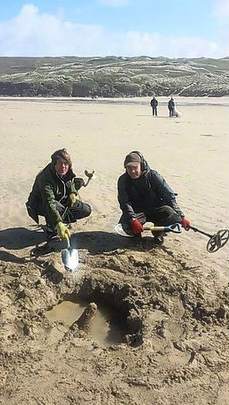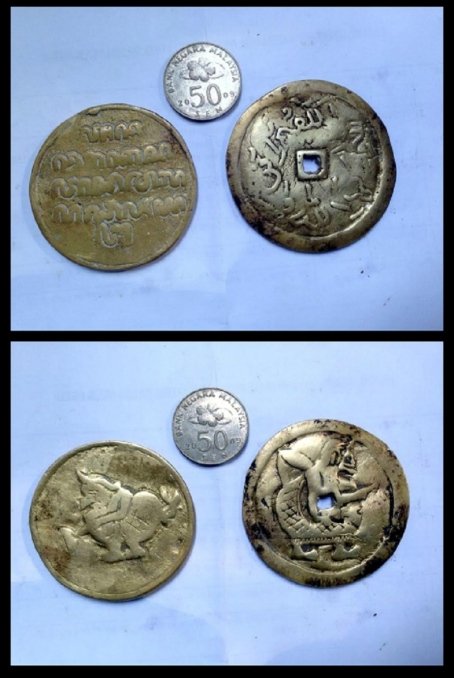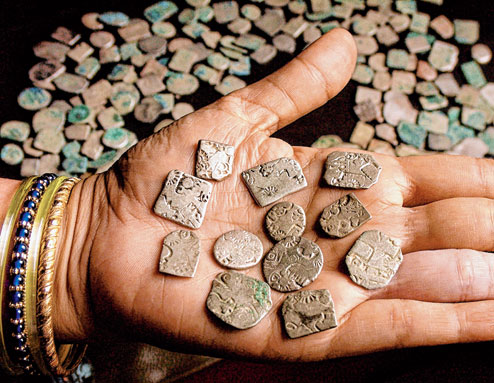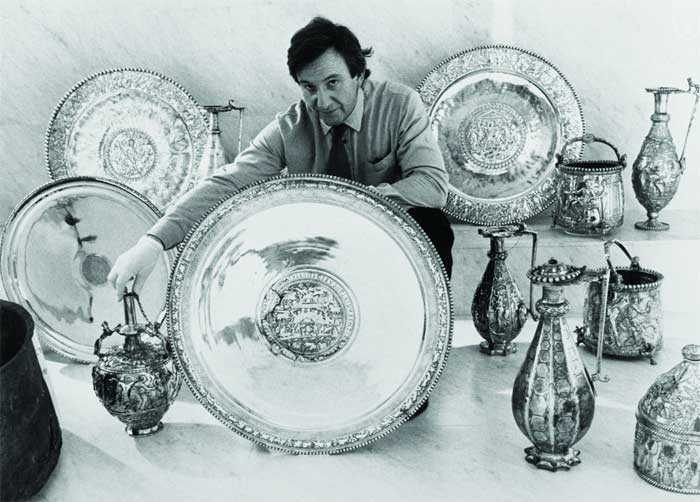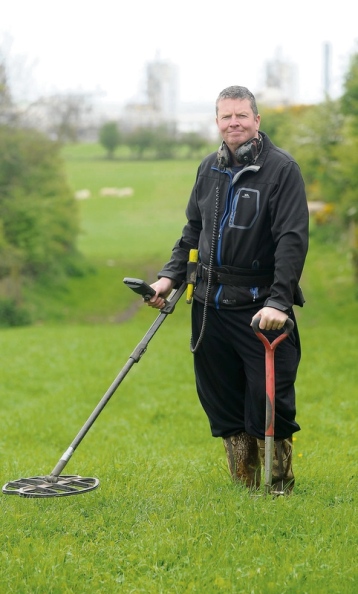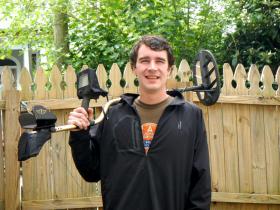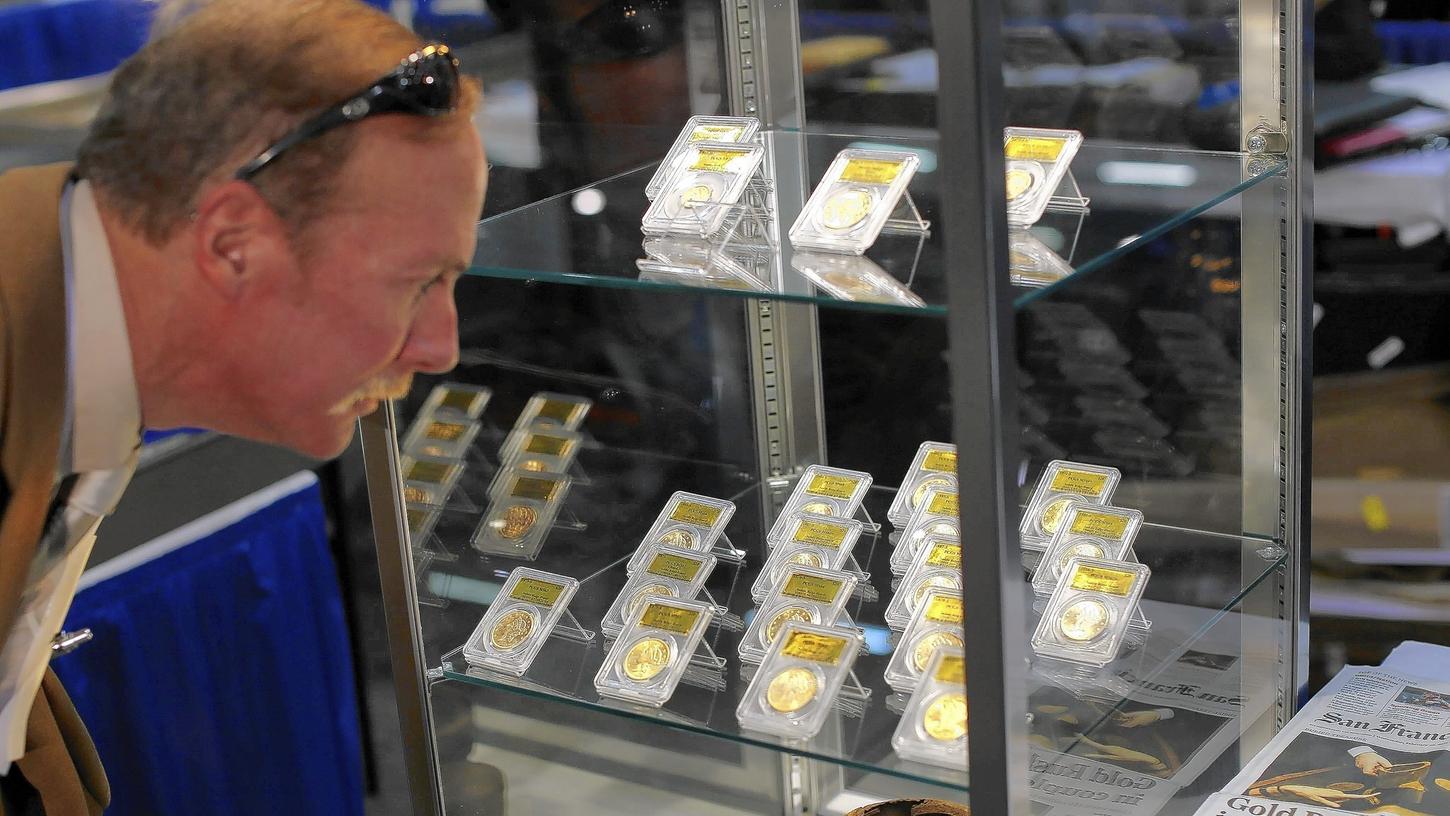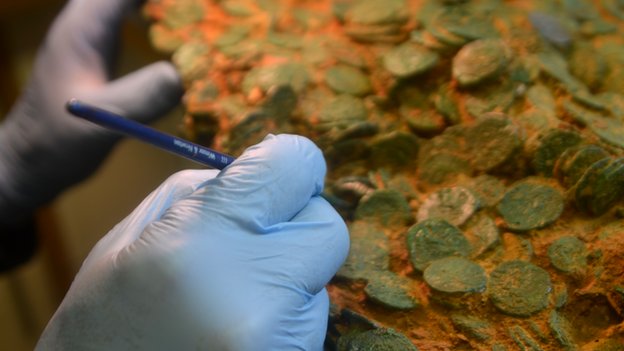When David Spohr dug into a Dorset cow-field after his metal detector gave a signal, he thought at first that he’d found nothing more than an old sardine tin.
But as he dug deeper, he could scarcely believe his eyes.
For the 55-year-old precision grinder from Creekmoor, Poole, realised he had struck gold – literally.
The item, buried around 10 inches deep in the Tarrant Valley field, was a Bronze Age gold lunula in the shape of a crescent moon.
It was probably used by a tribal leader, high priest or healer as a symbol of authority.
The lunula, which weighs 71.5 grams, is one of only a handful found in mainland Britain and is thought to be the first located by a metal detector. It is thought to be between 2,500 and 4,500 years old and is estimated to be worth up to £20,000.
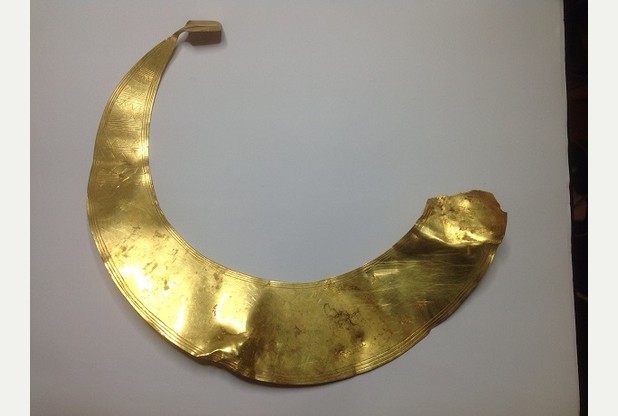 Bronze Age gold lunula, between 2,500 and 4,500 years old, worth up to £20,000.
Bronze Age gold lunula, between 2,500 and 4,500 years old, worth up to £20,000.
David Spohr was taking a break when his metal detector suddenly went off.
When he wiped the mud clean of what he found, he saw that it was in fact a lunula

